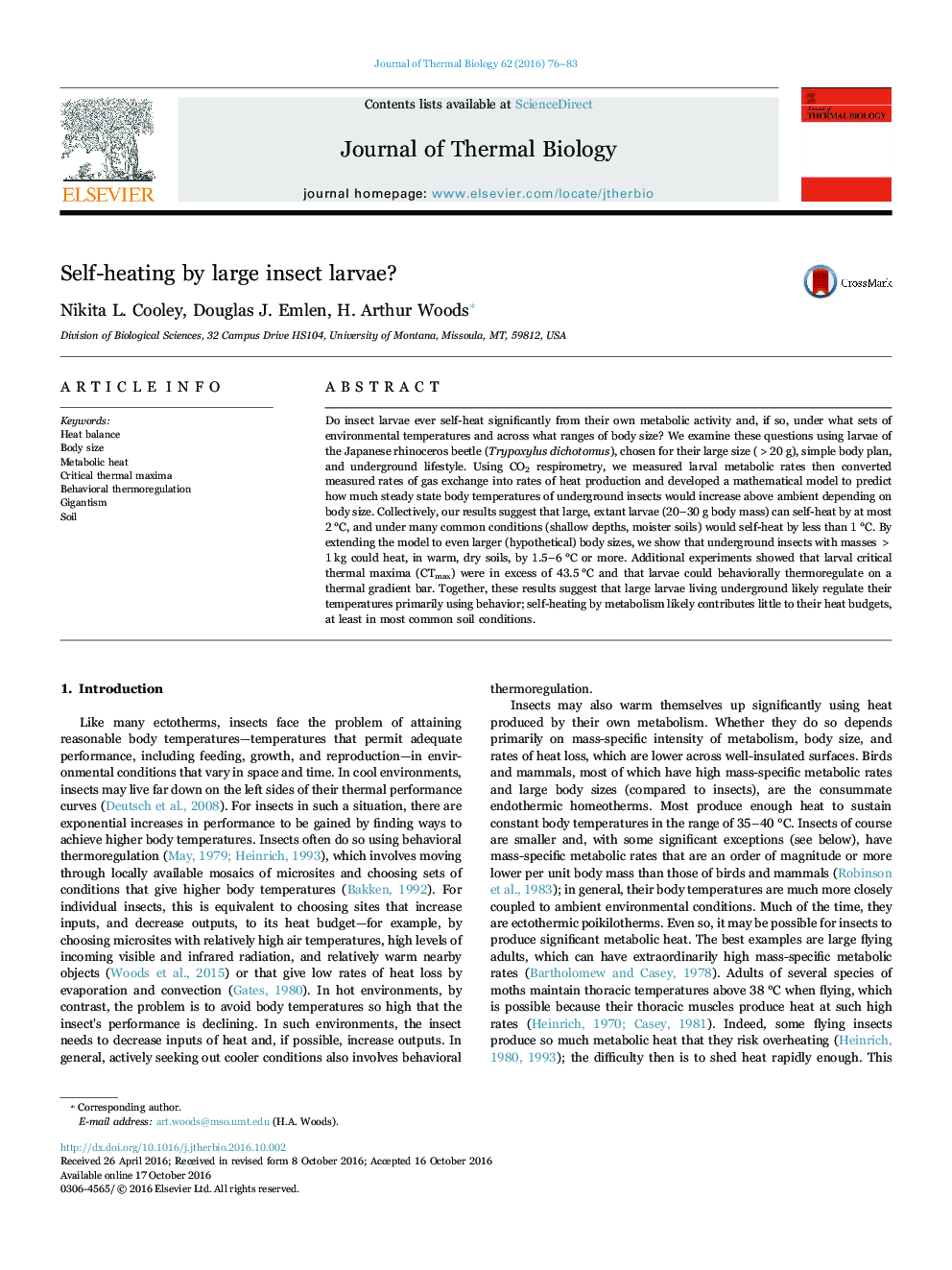| Article ID | Journal | Published Year | Pages | File Type |
|---|---|---|---|---|
| 5593499 | Journal of Thermal Biology | 2016 | 8 Pages |
Abstract
Do insect larvae ever self-heat significantly from their own metabolic activity and, if so, under what sets of environmental temperatures and across what ranges of body size? We examine these questions using larvae of the Japanese rhinoceros beetle (Trypoxylus dichotomus), chosen for their large size (>20 g), simple body plan, and underground lifestyle. Using CO2 respirometry, we measured larval metabolic rates then converted measured rates of gas exchange into rates of heat production and developed a mathematical model to predict how much steady state body temperatures of underground insects would increase above ambient depending on body size. Collectively, our results suggest that large, extant larvae (20-30 g body mass) can self-heat by at most 2 °C, and under many common conditions (shallow depths, moister soils) would self-heat by less than 1 °C. By extending the model to even larger (hypothetical) body sizes, we show that underground insects with masses >1 kg could heat, in warm, dry soils, by 1.5-6 °C or more. Additional experiments showed that larval critical thermal maxima (CTmax) were in excess of 43.5 °C and that larvae could behaviorally thermoregulate on a thermal gradient bar. Together, these results suggest that large larvae living underground likely regulate their temperatures primarily using behavior; self-heating by metabolism likely contributes little to their heat budgets, at least in most common soil conditions.
Keywords
Related Topics
Life Sciences
Agricultural and Biological Sciences
Agricultural and Biological Sciences (General)
Authors
Nikita L. Cooley, Douglas J. Emlen, H. Arthur Woods,
